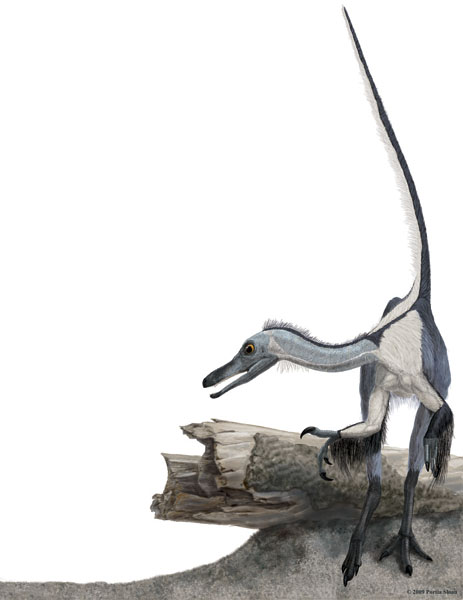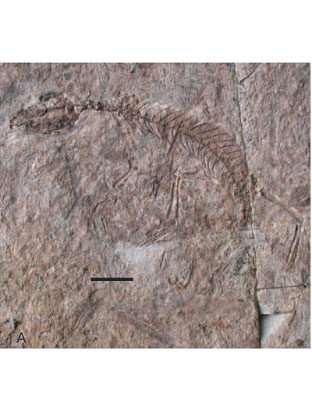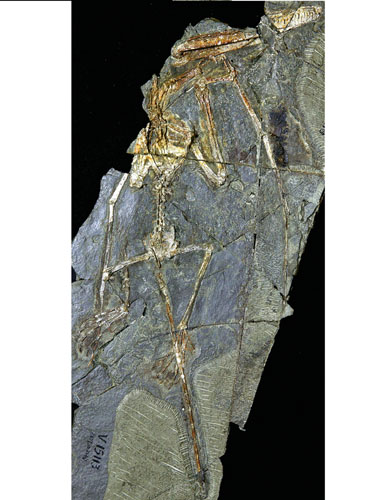|
 Research Progress Research Progress |
|
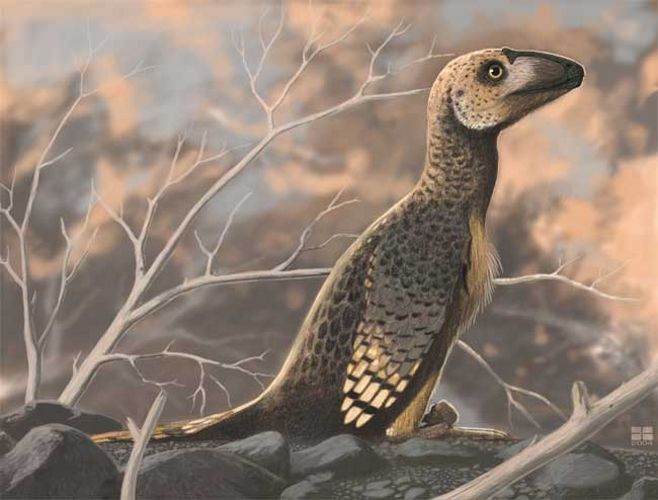 |
Dinosaurs Had Bird-like Wrists |
| Dr. Corwin Sullivan, a postdoctoral fellow from Canada, who is working at the Institute of Vertebrate Paleontology and Paleoanthropology, Chinese Academy of Sciences (IVPP), and his collaborators at IVPP,found the predatory dinosaur Deinonychus had feathered arms that worked just like a bird! Their paper was publish... |
|
|
|
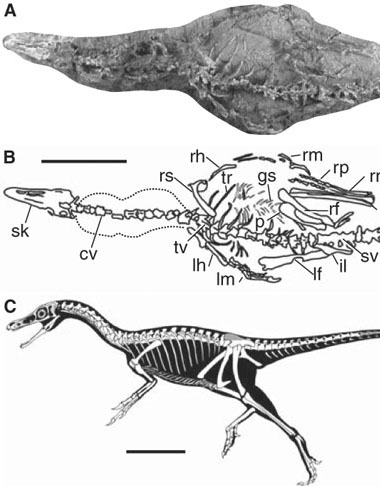 |
New finding confirms the link between dinosaurs and birds |
| The presence of the basal avialan Archaeopteryx in the latest Late Jurassic (Tithonian) and the poor fossil representation of more basal maniraptoran taxa in contemporaneous or slightly older deposits indicate either a gap in the stratigraphic record or, more controversially, that birds are not related to theropods.... |
|
|
|
 |
Evidence of the colour of Cretaceous dinosaurs and birds found |
| Spectacular fossils from the Early Cretaceous Jehol Group of northeastern China have greatly expanded our knowledge of the diversity and palaeobiology of dinosaurs and early birds, and contributed to our understanding of the origin of birds, of flight, and of feathers. Pennaceous (vaned) feathers and integumentary f... |
|
 |
New basal synapsid supports Laurasian origin for therapsids |
| Dr. June Liu, Institute of Vertebrate Paleontology and Paleoanthropology, Chinese Academy of Sciences, and his collaborators, recently describe a new large predatory synapsid, Raranimus dashankouensis gen. et sp. nov., from the Middle Permian of Dashankou in China which has a unique combination of therapsid and sphe... |
|
|
|
|
|
|
|
|
|
|



